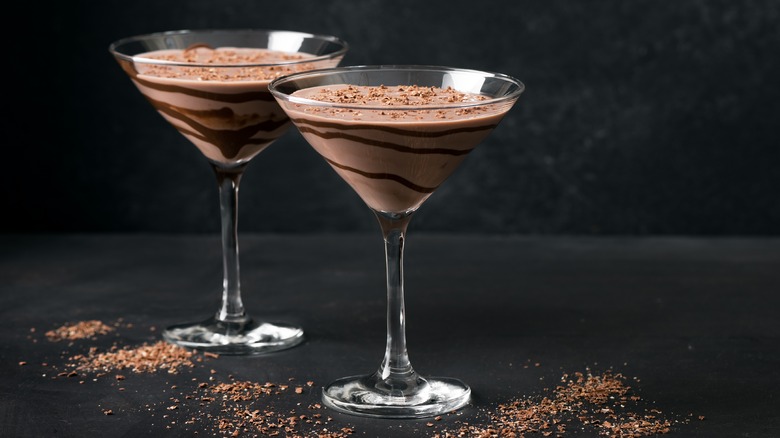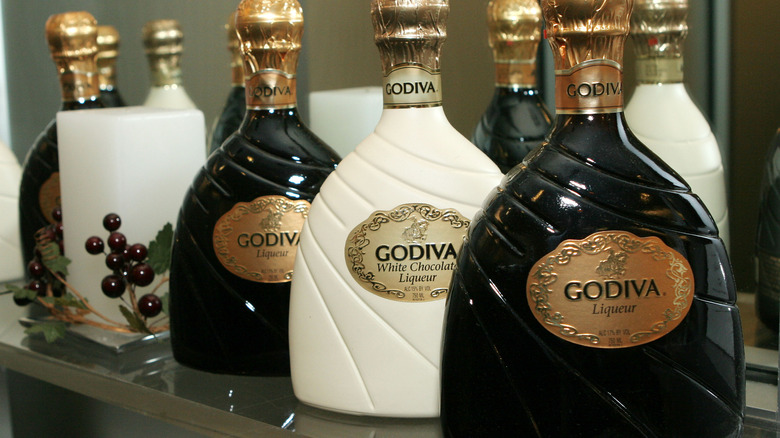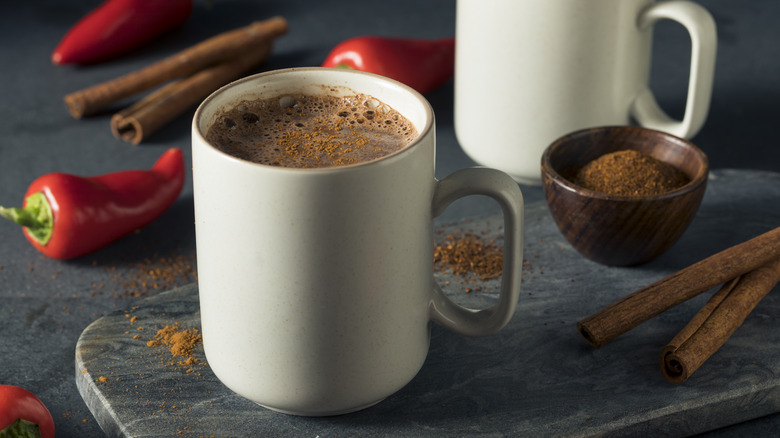Why You Should Be Making Your Own Chocolate Liqueur
Shopping for specialty cordials and liqueurs can be a bit of a gamble if you aren't very familiar with their niche qualities. To the uninformed, Kahlua – a coffee liqueur – may seem interchangeable with Jameson Cold Brew coffee-flavored whiskey or Patron Café (a tequila-espresso liqueur). But all three are drastically different in flavor, consistency, and utility. The same can be said for the variety of chocolate-flavored spirits on the market like crème de cacao and various chocolate liqueurs, according to Food.com. The difference in brand, processing style, and sweetness directly impacts the quality and character of their cocktails. One way to circumvent all that confusion would be to simply make your own.
Learning homemade chocolate infusions takes out some of the guesswork in finding the optimal chocolate liqueur because you control the flavor and texture. Making your own chocolate liqueur allows you to customize and experiment with flavors, and the process is a lot easier than you may expect. But to get the most from your chocolate libation, it's important to recognize the differences between a silky, rich chocolate liqueur and a refined crème de cacao.
Homemade chocolate liqueur
Not to be confused with chocolate liquor, chocolate liqueur refers to any beverage made from a base spirit like rum, whiskey, or vodka to which chocolate is added. But popular chocolate liqueurs like Godiva or Dorda also incorporate cream and additional spices to produce a thick, velvety chocolate cream liqueur reminiscent of a luscious milkshake. For a homemade recreation of this style of decedent liqueur, a recipe from An Italian In My Kitchen features cocoa, sugar, milk, and heavy cream mixed together in a pot as it's brought to a boil. After about five minutes, the mix is removed from heat and given some time to cool before the vodka is incorporated into the potion. Once completely cooled, the result is a silky, rich elixir of cream and chocolate perfect for spiked sundaes, boozy mudslide milkshakes, or just served on its own over ice.
Making your own chocolate liqueur this way gives you the opportunity to really experiment with flavors. Though sweet milk-chocolatey liqueurs have a global popularity, a Mexican hot-chocolate style liqueur would be a novel addition to your drinks by taking a more traditional approach, incorporating spices like cinnamon and chile (via America's Test Kitchen). A homemade chocolate liqueur also gives you the flexibility to experiment with other base spirits. Imagine the complexity of a chocolate liqueur with coconut rum or spicy rye whiskey as the base instead of a neutral vodka.
Crème de cacao explained
Crème de cacao is similar to chocolate liqueur and just as easy to make at home, but contrary to its name, doesn't actually contain any cream. The crème refers to the syrup-like consistency, making crème de cacao ideal for refined cocktails like chocolate martinis, according to Recipes.net. There are two types of crème de cacao. The dark variety (as the name implies) is a brown liqueur typically made through a percolation process similar to coffee, but cocoa nibs and base spirit take the place of coffee grounds and water. Alternatively, white crème de cacao uses a distillation method; cocoa nibs are soaked in a mix of water and alcohol. As it distills, the chocolate infuses the alcohol with flavor, but the solids are stripped out, producing a clear spirit with a delicate chocolate essence whereas the former method yields a robust chocolate flavor and opaqueness.
A simple recipe for homemade crème de cacao (via Recipes.net) requires a high-proof base spirit, cacao nibs, simple syrup, and some vanilla beans for balance. Just combine the nibs, vanilla, and spirit in a glass container, and let sit for about two weeks. Over time, the alcohol extracts and absorbs the chocolate flavors, and once the concoction is strained, sweeten to taste with simple syrup before allowing it to sit for another two days. The beauty of homemade infused liqueurs like this is the freedom to curate an optimal flavor for whatever the occasion.


